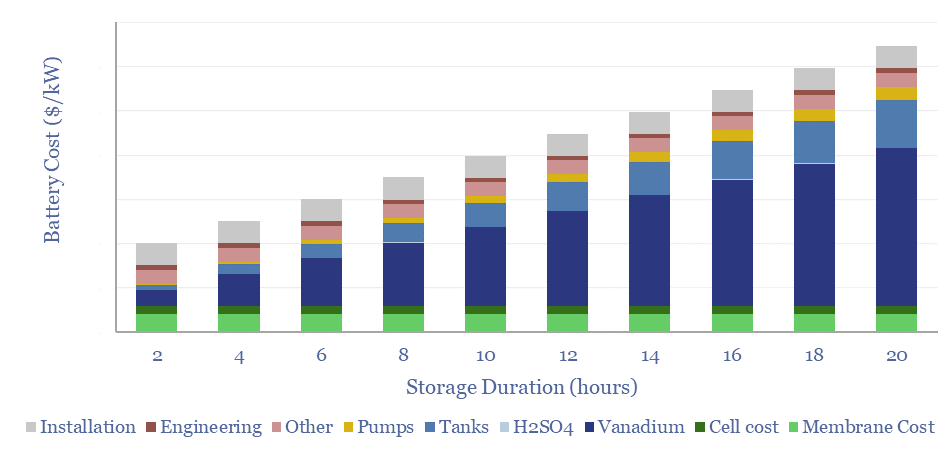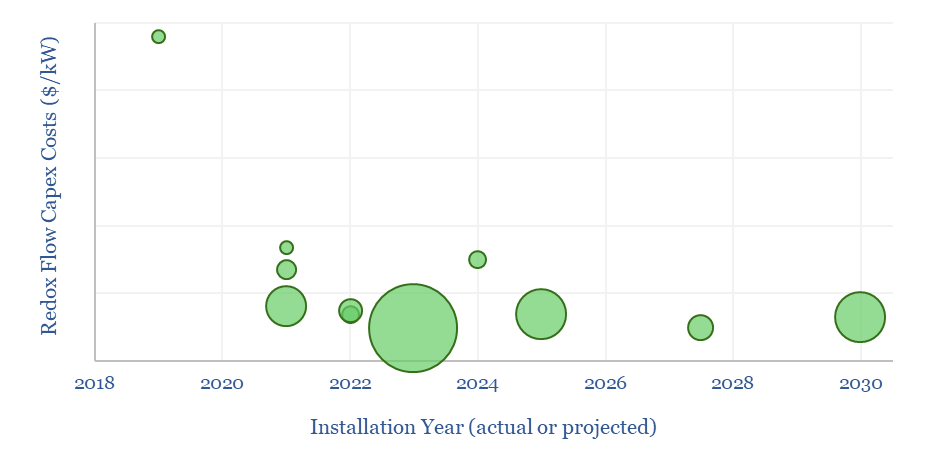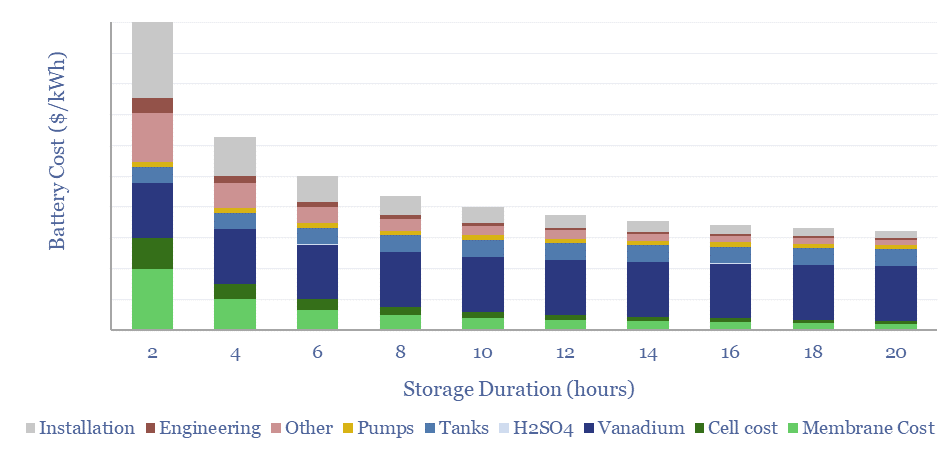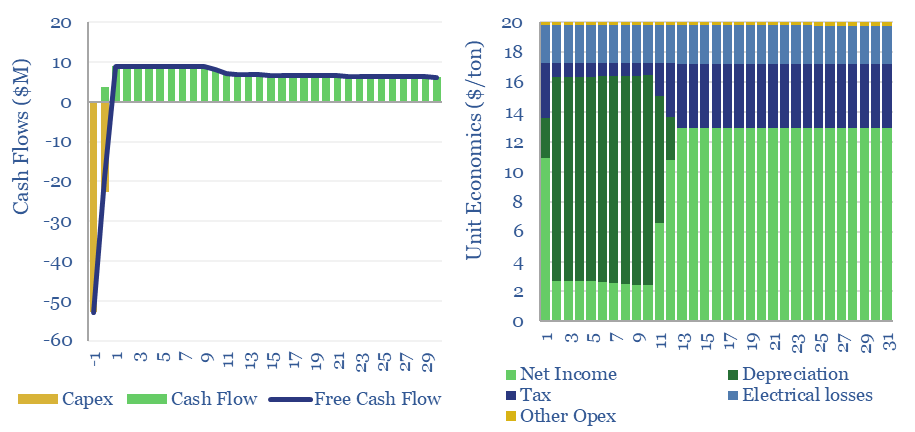Redox flow battery costs are built up in this data-file, especially for Vanadium redox flow. In our base case, a 6-hour battery that charges and discharges daily needs a storage spread of 20c/kWh to earn a 10% IRR on $3,000/kW of up-front capex. Longer-duration redox flow batteries start to out-compete lithium ion batteries for grid-scale storage.
A redox flow battery charges and discharges when different electrolyte ions, with different redox potentials, on different sides of a proton exchange membrane simultaneously oxidize (surrendering an electron into one electrode) and reduce (gaining an electron from the other electrode). This absorbs or creates an electric current.
The purpose of this data-file is to build up the costs of redox flow batteries, starting from first principles, for Vanadium redox flow batteries.

A 6-hour redox flow battery costing $3,000/kW would need to earn a storage spread of 20c/kWh to earn a 10% return with daily charging and discharging over a 30-year period of backstopping renewables.
Past redox flow projects and studies that have crossed our screens average $4,000/kW and $750/kWh of up-front capex costs. However these costs are highly variable and depend upon the duration of the battery.

One interesting facet of redox flow batteries is that they can be scaled up simply by enlarging their electrolyte storage tanks. Tank costs rise with capacity. But other costs remain fixed, such as membranes and electrodes. So per kWh costs fall as battery capacity rises (below).

Thus a 12-hour redox flow battery that charges and discharges 250 days per year can achieve the same total storage spread as a 6-hour battery that charges and discharges around 360 days per year, both around 20c/kWh. This helps to integrate solar and wind into increasingly renewables-heavy power grids.
How do redox flow batteries compare to lithium ion batteries? Overall we think that for long-duration, grid-scale electricity storage, redox flow batteries are looking more economical than lithium ion, especially once storage durations surpass 6-8 hours. Our comparison file is here.
This data-file contains a bottom-up build up of the costs of a Vanadium redox flow battery. Costs, capex, Vanadium usage and tank sizes can all be stress-tested in this model. We have also published an outlook for redox flow batteries.
